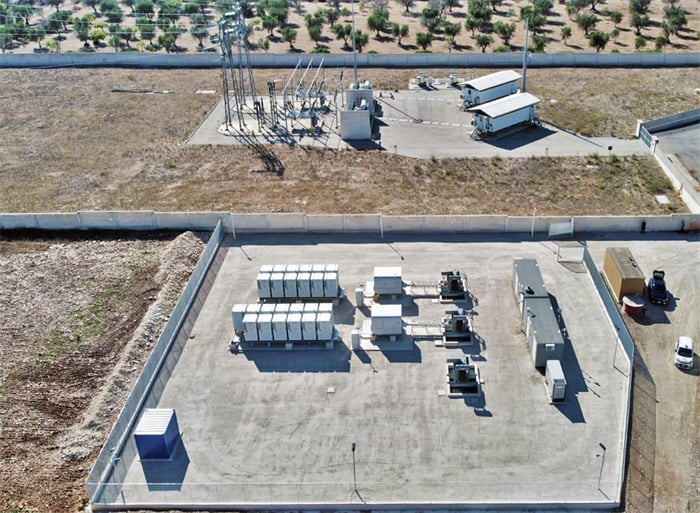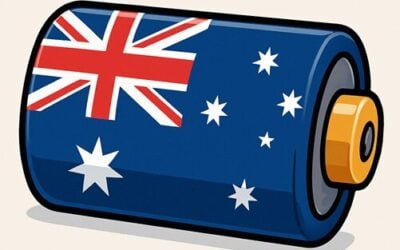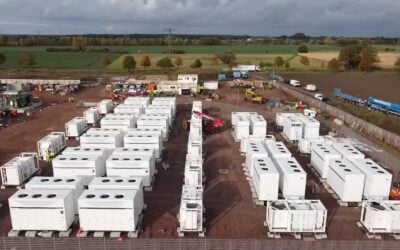
The TSO of Italy has completed its first MACSE auctions for energy storage, procuring 10GWh of capacity at what the NHOA CEO called ‘exceptionally competitive prices’.
Transmission system operator (TSO) Terna announced the results of Italy’s long-awaited energy storage-focused capacity auction scheme, full name Meccanismo di Approvvigionamento di Capacità di Stoccaggio Elettrico, yesterday (1 October).
All 10GWh of capacity targeted was procured, covering four different zones in Southern Italy and the islands, with bids exceeding the available capacity by a factor of four.
The weighted average clearing prices were €12,959/MWh-year (US$15,230) across all four with the individual zones as follows:
Try Premium for just $1
- Full premium access for the first month at only $1
- Converts to an annual rate after 30 days unless cancelled
- Cancel anytime during the trial period
Premium Benefits
- Expert industry analysis and interviews
- Digital access to PV Tech Power journal
- Exclusive event discounts
Or get the full Premium subscription right away
Or continue reading this article for free
- Central-South: €14,566/MWh-year
- South and Calabria: €12,146/MWh-year
- Sicily: €15,846/MWh-year
- Sardinia: €15,029/MWh-year
All were well below the reserve premium, i.e. the maximum price available, of €37,000/MWh-year. All the projects are lithium-ion battery energy storage systems (BESS) and need to come online in 2028, with contracts going for 15 years.
Under MACSE, Terna will effectively rent the BESS’ flexible capacity for an online marketplace allowing renewable energy operators to procure load-shifting. Some 80% of awards went to companies with some level of state backing.
“The auction results show strong competition and robust market interest. We are looking at an associated investment volume of around €1 billion, which will enable greater renewable integration while further reducing reliance on thermoelectric generation and related natural gas consumption,” said Giuseppina Di Foggia, Terna CEO.
Around 70% of the capacity awarded went to projects from Italy-headquartered utility and power generation firms Enel Group and Eni.
‘Exceptionally competitive prices’ will mean ‘razor-thin margins’
In comments posted on LinkedIn and also sent to Energy-Storage.news, Italy-headquartered system integrator NHOA Energy’s CEO Giuseppe Artizzu said the results mean different things depending on where you sit.
“Yes, exceptionally competitive prices. Overall, very credible roster of awardees,” he said.
“As a citizen: I am relieved that a large portion of such system-critical plants will be owned and operated by companies that bear quasi-government responsibility. In the current geopolitical environment, the total absence of resilience-based qualification or award criteria in the MACSE and CRM (capacity market) disciplines is surreal.”
However, he indicated that the very low prices Terna secured could be a major challenge for the industry.
“As a market observer: I am stricken by the mismatch between the investments that went into the development of greenfield sites and the resulting aggregate addressable income stream,” he said.
“As a domestic, but internationally-experienced turnkey BESS supplier: with such razor-thin margins, the allocation of execution and interface risk in the contract bundles between the sponsors, lenders, OEMs and contractors is going to be fun…”
Low price driven by handful of projects
Roberto Jimenez, executive director for global BESS owner-operator BW ESS, told Energy-Storage.news that the firm won a contract for one of its projects in Italy. The low prices were probably driven by a few aggressive bidding strategies, he explained, but price was not the only criteria in the auction.
“This auction was among the most competitive ever for BESS in Europe and marks a major step forward for Italy as it seeks to add much-needed flexibility to its power system,” he said.
“The low average clearing price was likely driven by a handful of very large projects bidding aggressively, combined with exceptionally strong market interest – the auction was oversubscribed more than four times.”
“While price was an important factor, the success of our Cerignola project – a 95.55MW / 706MWh long-duration BESS under development in Apulia – was also shaped by other parameters. These included the unique characteristics of the project and our team’s ability to design a technical solution optimised for this auction. Combined with the deep local market knowledge of our partners at ACL Energy and our extensive experience from more mature BESS markets, this proved decisive in securing the win.”
Prices could make private tolls and PPAs more attractive
Consultancy Our New Energy, also posting on LinkedIn, said that the MACSE auction now makes private offtakes and tolling agreements in Italy more attractive.
“While structurally different products, in some areas the risk-return profile now looks highly skewed in favor of the private PPA/tolling market. In such areas, early movers who successfully diversify their risk by securing PPAs/tolling agreements in recent months appear to have gained a strong competitive advantage, as MACSE has now acted as a price discovery mechanism.”
IPP Zelestra was one such early mover, securing a long-term toll with power firm BKW for up to 2GWh of projects. However, those are in Northern Italy, whereas MACSE will primarily be for projects in Southern Italy, where its renewables pipeline is mainly comprised.
“How much will the private market adjust prices and could this trigger a strategic shift in future BESS investment in Italy? As we see first-hand in our advisory work, the real competitive advantage will stem from effective revenue hedging strategies,” Our Next Energy added.
Pablo López de Rego Lage, country manager Italy for risk management solutions provider Optimize Energy, said it showed the maturation of the lithium-ion BESS industry,
“Has an incipient technology crossed the line into a mature market from the start? Some of the factors behind this breakthrough most likely include: 1. Fierce market competition 2. Low-cost supply chains with tightly contained CAPEX 3. Strong bankability of the MACSE program 4. Merchant tail revenues from system oversizing to guarantee capacity over time 5. A shift toward mature-market IRRs in the 6–8% range.”





